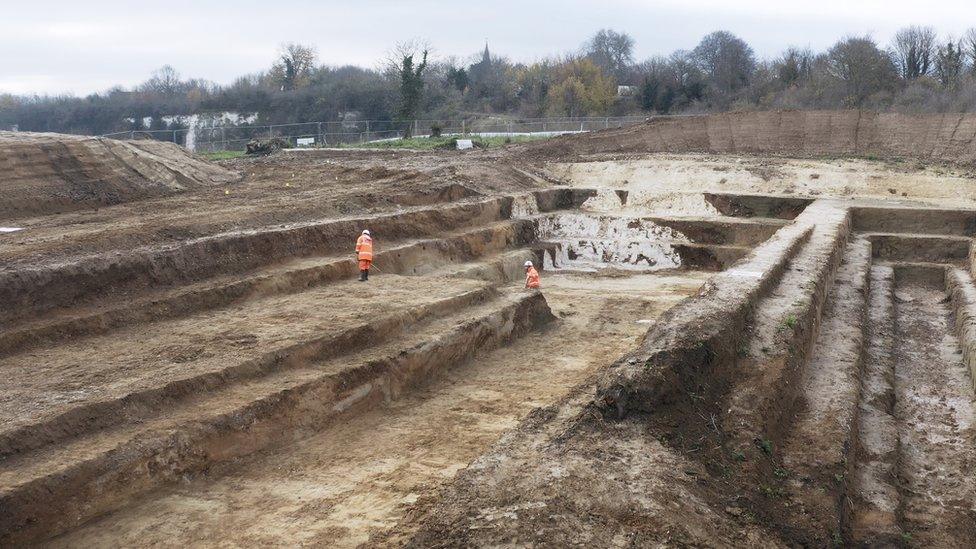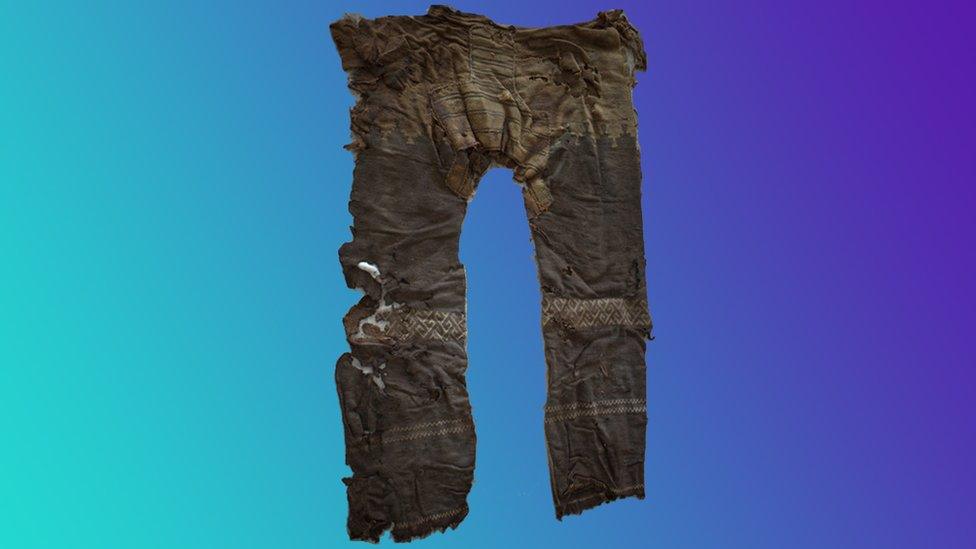Ice-age axes and prehistoric stone tools discovered in Kent
- Published
- comments

Excavations revealed artefacts in deep Ice Age sediments preserved on a hillside above the Medway Valley
A prehistoric treasure trove of stone axes and tools from the Ice-Age has been discovered in Kent.
Researchers from UCL Archaeology South-East, discovered around 800 ancient artefacts buried in a hillside above the Medway Valley.
The items are thought to date back to the Ice-Age, around 300,000 years ago, making them the earliest prehistoric tools to ever be discovered in the UK!
One of the items include a giant hand axe, which is around 30cm long.

The Medway Valley dig site revealed loads of artefacts from the Ice Age
"We describe these tools as giants when they are over 22cm long, and we have two in this size range." said Senior archaeologist Letty Ingrey.
"The biggest, a colossal 29.5cm in length, is one of the longest ever found in Britain.
"These hand axes are so big it's difficult to imagine how they could have been easily held and used."
"Perhaps they fulfilled a less practical or more symbolic function than other tools, a clear demonstration of strength and skill. While right now, we aren't sure why such large tools were being made, or which species of early human were making them, this site offers a chance to answer these exciting questions." Dr Ingrey said.
Neanderthals are the ancient relatives of modern humans.
They lived across Europe and south west and central Asia between about 400,000 to 40,000 years ago.
300,000 years ago Medway Valley was a wild landscape of woodlands, hills and river valleys which was home to deer, horses and the now-extinct straight-tusked elephant.
During this time Neanderthal people and their cultures were just starting to emerge and they may even have shared the landscape with other early human species.
- Published8 January 2023

- Published16 October 2022

- Published26 February 2022

